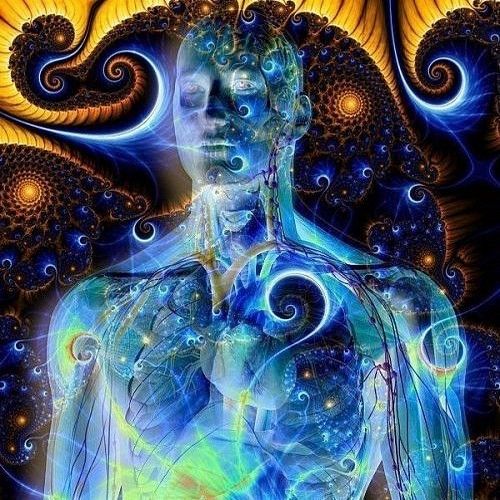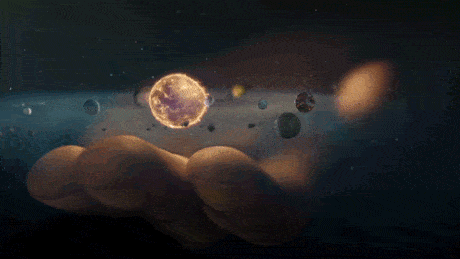Have you ever experienced a state of being completely absorbed in an activity, losing track of time, and feeling a sense of effortless focus and enjoyment?
This is known as the flow state, also referred to as being in the zone.
It is characterized by a deep sense of enjoyment, effortless concentration, and a loss of self-consciousness. Individuals experience a heightened sense of performance and productivity, as well as a distortion of time, where hours can feel like minutes.
When we are in a flow state, our brains release neurotransmitters that create a sense of pleasure, motivation, and creativity.
This state has been studied extensively by psychologists and neuroscientists, who have found that it has numerous benefits, including increased productivity, enhanced learning, and improved well-being.
The concept of the flow state was first introduced by psychologist Mihaly Csikszentmihalyi in the 1970s. He described it as a state of effortless concentration and enjoyment that leads to enhanced performance and a sense of fulfillment.
Csikszentmihalyi studied various individuals, from artists to athletes, and found that they often described this state as a peak experience where they felt their best and performed at their highest level.
He discovered that flow occurs when there is a perfect balance between the challenge level of the task at hand and an individual’s skill level. When the challenge is too low, individuals may experience boredom, while excessive challenges can lead to anxiety and frustration.
Flow is achieved when there is an ideal harmony between the two.
This makes sense given the fact that in biology, balance and harmony within the human body are crucial for our health as the overall optimal being and functioning of various physiological systems.
Achieving balance and harmony involves maintaining equilibrium between different bodily processes, such as physical, mental, emotional, and spiritual aspects.
The benefits of entering the flow state are numerous.
Not only does it enhance performance and productivity, but it also promotes a sense of well-being and happiness. When in the flow state, individuals are fully present and focused, which can lead to a sense of mastery and accomplishment.
It can also enhance creativity and innovation, as individuals are able to tap into their full potential.
It’s important to note that the flow state is not a constant state of being, but rather a transient experience that can be cultivated and nurtured. By recognizing the common characteristics and indicators, you can begin to understand how to enter and sustain this state more frequently.
With practice, you can unlock the potential of the flow state and tap into your highest levels of performance, creativity, and fulfillment.
Author Jamie Wheal, explains that, “Flow is meditation in action, or meditation in motion. It requires real-time decision making and is a powerful tool for peak performance.
He believes flow is achieved through an altered state of consciousness that leads to cognisized peak performance. It can be both a state and a stage of development, leading to integration and a permanent state of flow.
Wheal says, “Technology can be training wheels for accessing flow states, but the fundamental tools of breath control, meditation, and body movement are still important. Breathing practices can radically shift your consciousness and help you achieve different states of flow.”
He states that exposure to the natural world, such as spending time in forests or near water, can induce awe and create a state of flow. He believes the big mountains and blue oceans are perfect mediums for humans to hack this process
How to Find Your Flow
The flow state is characterized by several key elements.
Attentional Focus: In flow, individuals are fully absorbed in the task at hand, with their complete attention directed towards it. They are not easily distracted by external factors.
Positive Mind Set: Cultivating a positive mindset and managing self-doubt is crucial. Negative thoughts and self-criticism can be major barriers to achieving flow. Practice self-compassion and remind yourself that it’s natural to face challenges and setbacks.
By reframing obstacles as opportunities for growth and learning, you can shift your mindset and enter the flow state with greater ease.
Challenge-Skill Balance: Flow occurs when the level of challenge presented by the activity matches an individual’s skill level. This applies to most creative, intellectual and physical activities that test and expand upon your skills.
The task should be neither too easy nor too difficult, but just right to engage their abilities.
Creative Pursuits: Creative pursuits are another fruitful avenue for finding flow. Painting, writing, playing a musical instrument, or even engaging in crafts or DIY projects can all provide a sense of immersion and concentration that can lead to flow.
The act of creating something from scratch, with a clear goal in mind, can help you enter a state of flow where time seems to fly by and distractions fade away.
Physical Activities: Whether it’s running, dancing, playing basketball, or practicing yoga, engaging in physical movement can help you enter a state of flow by challenging your body and mind simultaneously.
The repetitive nature of certain activities, like swimming laps or cycling, can also help to quiet the mind and create a sense of flow.
Intellectual Challenges: For those who enjoy intellectual challenges, activities like solving puzzles, playing chess, or engaging in complex board games can be excellent avenues for finding flow.
These activities often require intense focus, strategic thinking, and problem-solving, which can lead to a state of deep concentration and engagement.
Clear Goals: Flow is more likely to occur when the activity has clear goals or objectives. Having a sense of direction and purpose helps to direct attention and maintain focus.
Immediate Feedback: Flow is facilitated by activities that provide immediate and clear feedback. Feedback helps individuals gauge their progress and adjust their actions accordingly.
Sense of Control: Flow is more likely to occur when individuals feel a sense of control over the activity. They perceive themselves as capable of influencing the outcome and have a sense of agency.
Timelessness: When in flow, individuals often lose track of time. They become so engrossed in the activity that hours can pass by without their awareness.
Peace and Calm: Flow is associated with a sense of calm and peace. Individuals experience a reduction in self-consciousness and anxiety, allowing them to fully focus on the task without distractions.
Intrinsic Motivation: Flow is often experienced when individuals engage in activities that are inherently rewarding and enjoyable. The activity itself becomes its own motivation, independent of external rewards.
Disconnect from Physical Needs: In flow, individuals may temporarily forget about physical needs such as hunger, thirst, or fatigue. They are fully immersed in the activity and may neglect bodily sensations.
Single-Mindedness: Flow requires undivided attention and concentration. Multitasking is incompatible with the flow state, as it requires complete focus on a single task.
Benefits of Flow State
The flow state offers numerous benefits for individuals’ physical, mental, and emotional well-being. Some of the key benefits include:
Increased Productivity: Flow enhances performance and productivity by enabling individuals to fully engage their skills and abilities. They can accomplish tasks more efficiently and effectively while using less energy.
Heightened Satisfaction: Being in flow is associated with a deep sense of satisfaction and fulfillment. Individuals derive intrinsic enjoyment and gratification from the activity itself, leading to a greater sense of well-being.
Improved Emotional Regulation: Flow helps reduce stress, anxiety, and negative emotions. The state of deep focus and absorption in the task at hand promotes emotional regulation and a sense of calm.
Enhanced Learning and Creativity: Flow facilitates learning and creativity by promoting deep engagement and concentration. It improves information processing, problem-solving abilities, and the generation of novel ideas.
Positive Well-Being: Flow contributes to overall well-being by promoting positive emotions, a sense of accomplishment, and a balanced state of mind. It can lead to increased self-confidence, self-esteem, and a more positive outlook on life.
Achieving Flow State
While flow can occur spontaneously, there are strategies that can help individuals enter and sustain the flow state more consistently. Here are some tips to achieve flow:
Set Clear Goals: Clearly define the goals and objectives of the task or activity. Having a clear direction helps to focus attention and create a sense of purpose.
Find the Right Challenge: Engage in activities that provide an optimal level of challenge. The task should be challenging enough to require concentration and effort, but not so difficult as to cause frustration or overwhelm.
Eliminate Distractions: Minimize distractions and create an environment conducive to focus. Turn off notifications, find a quiet space, and remove any potential interruptions.
Create a Ritual: Establish a pre-flow ritual that signals to your brain that it’s time to enter a focused state. This could involve setting up your workspace, listening to specific music, or engaging in a brief mindfulness practice.
Engage in Intrinsic Motivation: Choose activities that you genuinely enjoy and find rewarding. Find ways to make the activity itself engaging and meaningful, rather than solely focusing on external rewards or outcomes.
Practice Mindfulness: Cultivate mindfulness and present-moment awareness. Pay attention to the task at hand without judgment or distraction, fully immersing yourself in the experience.
Take Care of Yourself: Ensure that your physical and mental well-being is taken care of. Stay hydrated, get enough rest, and engage in self-care practices that support your overall well-being.
Embrace Flow Opportunities: Seek out activities and tasks that have the potential to induce flow. Explore hobbies, sports, or creative pursuits that align with your interests and provide opportunities for deep engagement.
The Science of Flow
Research has shown that individuals who frequently experience flow are more likely to experience overall life satisfaction and a sense of fulfillment. By regularly immersing themselves in activities that bring about flow, individuals can cultivate a sense of purpose and find joy in their pursuits.
As I mentioned above, this is achieved through balance. Understanding the concept of balance and harmony between the human body and the mind are crucial when it comes to achieving the flow state and optimal health.
Our bodies are intricate systems with various interconnected components, and maintaining a state of balance is essential for overall well-being. Harmony within the body involves the seamless coordination and synchronization of different systems and organs.
When all the systems work together harmoniously, they support each other’s functions and contribute to the overall health and vitality of the body.
To better understand balance and harmony, one must consider the interplay of factors such as nutrition, exercise, sleep, stress management, and emotional well-being. These elements are interconnected and can significantly impact our overall health.
The interconnectedness of body systems extends beyond these examples, with each system relying on and influencing others in a complex network.
The nervous system controls and coordinates the functions of all body systems, while the endocrine system regulates hormones that impact various physiological processes. The musculoskeletal system supports movement and provides structure, while the integumentary system serves as a protective barrier for the body.
Balance refers to the equilibrium between different bodily functions, including physical, mental, and emotional aspects. When these components are in balance, the body functions optimally, allowing us to feel our best.
In physical fitness, particularly in preventing falls and injuries, especially as we age. The ability to maintain balance relies on the integration of sensory information from the inner ear, somatosensory system, and vision.
The brain processes this information to plan and execute movements effectively. Staying mentally active is crucial for maintaining balance as cognitive function is closely linked to balance control.
On a neurological level, the flow state is associated with various changes in the brain. During flow, the prefrontal cortex, responsible for self-consciousness and the inner critic, becomes less active.
This allows individuals to fully immerse themselves in the present moment without self-doubt or judgment hindering their performance.
At the same time, the brain releases a surge of neurochemicals, including dopamine, endorphins, and norepinephrine, which contribute to feelings of pleasure, heightened focus, and a sense of euphoria.
Gnostic Warrior Conclusion
Embracing the flow state as a pathway to fulfillment and personal growth can truly transform your life. From increased focus and productivity to enhanced creativity and happiness, entering the flow state allows you to tap into your full potential.
Understanding the underlying psychology and neuroscience of flow can have profound implications for personal and professional growth.
Achieving optimal flow requires a balanced and harmonious approach. Our bodies function best when all components are in sync, including our diet, exercise, sleep, and stress management.
Balance helps us maintain physical, mental, and emotional well-being, preventing issues like stress, poor nutrition, and inactivity. Harmony integrates our thoughts, emotions, and actions, fostering resilience and a sense of wholeness.
Practices like mindfulness, meditation, exercise, self-care, creativity and completing difficult tasks enhance this harmony.
By immersing yourself in activities that challenge and engage you, you can enter this state of optimal human performance, i.e. flow.
Whether it’s pursuing a passion, engaging in a hobby, or even finding flow in your daily work, the key is to find activities that align with your skills and interests, while maintaining a healthy balance between all other physiological and mental processes.
But remember that the flow state is not just about achieving success or reaching goals; it’s about finding joy and deep satisfaction in the process. Hence, it is being fully present in the moment, losing track of time, and experiencing a sense of complete immersion in what you’re doing.
By consistently seeking out and embracing this heightened mental and spiritual state of being, you can unlock new levels of personal growth and fulfillment.
It is through this state of flow that you can push your boundaries, overcome challenges, and live a harmonious and fulfilled life.
Sources:
Positive Psychology – Flow Theory
Jamie Wheal – The Flow Genome Project
Healthline – Balance and Harmony in the Body
Psychology Today – Why Are Balance and Harmony So Vital for Well-being?
Harvard Health – Body and Brain are Crucial for Good Balance

Moe is the founder of GnosticWarrior.com. He is a father, husband, author, martial arts black belt, and an expert in Gnosticism, the occult, and esotericism.









